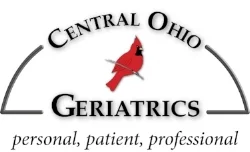By John M. Weigand, M.D.
Director of Geriatric Services
Central Ohio Geriatrics
Calcium is the most prevalent mineral found in the human body with 99% of calcium being found in bones or teeth. This important substance provides vital mineralization of bones, which improves their strength. Vitamin D is also important, because this fat-soluble vitamin promotes calcium absorption in the stomach and intestines and helps regulate calcium concentrations in the body. So what is the best way to get an adequate amount of calcium in this day and age of osteoporosis?
The first important step is to promote good nutritional practices in our children and young adults. Fortified milk and orange juice, which are good sources of calcium, are frequently underappreciated by our youth and adults who prefer to reach for carbonated soft drinks or high-energy drinks. This tendency creates a double whammy because not only are we missing out on the dietary calcium in milk, yogurt or orange juice, but the high caffeine content and carbonation of soft drinks causes a loss of calcium from the body. Dietary calcium is better absorbed by the human body than calcium supplements found in vitamins and tablets. The recommended dietary allowance, or RDA, for older adults is 1,200 mg daily. The typical calcium content from common dietary sources include:
Yogurt, 8 oz. 400 mg per serving
Fortified orange juice, 8 oz. 375 mg per serving
Cheddar cheese, 1 ½ oz. 300 mg per serving
Milk, 8 oz. 270-300 mg per serving
Cottage cheese (1%), 1 cup 130 mg per serving
Ice cream, ½ cup 80 mg per serving
An alternative way to promote calcium intake is through the use of supplements. While there are half-dozen or so forms of calcium available at the drug store, the most recommended in our practice are either calcium carbonate or calcium citrate. Not only are these commonly found, generally affordable and well tolerated, they are a suitable second-best choice to the calcium we get from our food. Calcium citrate is the best absorbed form of supplements and does not require the usual stomach acid to help in the absorption of the calcium. So why is that important? Some of the most popular prescription and over-the-counter medications in the United States are reflux-, ulcer- or acid-reducing medications. These medications work by increasing the pH of the stomach (decreasing the amount of stomach acid that is produced) which helps a stomach ulcer or reflux, but cuts down on the absorption of many of the calcium supplements, except calcium citrate. If you are not on an acid-reducing medication (such as Zantac, Prilosec, Nexium, Pepcid, among others), then calcium carbonate is probable just fine for you. It is much cheaper and easily found. Caution: Do not use dolomite or bone meal as a calcium source because these supplements maybe contaminated with lead, which can cause unique and dangerous side effects.
So even if you don’t “got milk” like the popular advertising campaign encourages, make sure you “got calcium” and take enough in your diet or in a supplement to get you to 1200 mg-1500 mg daily in divided doses. That last point is important: If you take all of your calcium at once, you are not absorbing all the calcium and you’ll be missing out on the benefits to your bones and teeth while “flushing” part of your investment down the drain.
